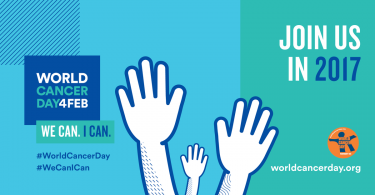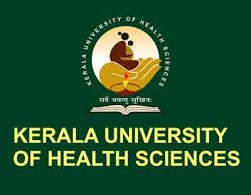Nowadays, coverage for alternative therapies can be used in 68 accredited hospitals, provided they are combined with modern medicine and are under strict supervision.
In 2006, Naresh Trehan, president of Medanta, thought of a novel approach to clinical treatment, introducing integrative medicine in his hospital that has not yet been established. He believed that alternative systems of medicine had a significant place in the treatment of patients. By bringing Ayurveda and yoga together with homeopathy, Unani and Siddha, it was possible to offer comprehensive medical solutions that work together.
G Geetha Krishnan, a senior Ayurvedic practitioner, joined her company, Global Health Private Limited, even before Medanta the Medicity was created. The idea behind integrative medicine is to combine modern and traditional therapeutic practices to provide the patient with integral well-being. “It was not just about offering patients a treatment option or establishing a store inside a store. The effort was to offer a complete wellness solution with the combination of different drug systems after clinical studies and the creation of proof of concept. “
Bringing scientific proof and insurance.
In 2014, the Ayush Ministry devised a concrete plan to promote alternative medicine such as Ayurveda, Unani and homeopathy. In addition to regularizing the curriculum, the ministry encouraged clinical studies and brought transparency and accurate calibration to make these systems more widespread. At the same time, the National Hospital Accreditation Board (NABH) was agreed to establish quality standards for hospitals offering Ayurvedic treatment. This was an effort to separate the thousands of spas and Ayurvedic wellness centres from hospitals, which offered treatment for the disease. So far, there are 68 hospitals and accredited centres on the Ayush site.
Similarly, insurance companies were urged to cover the cost of treatment if the patient wanted to try the alternative treatment route.
The constant presentations and lobbying of Ayurvedic drug manufacturers and industry bodies such as CII and Ficci, and representations before the Indian Insurance Regulatory Authority (Irdai) led Ayush’s ministry to present guidelines for insurers to begin to offer coverage in 2014. Fifteen insurance companies are listed with the Ayush ministry and cover the treatments given under Ayurveda.
An indicative price list has been created for 97 treatments with the participation of public and private health insurers. These therapies have accepted protocols and lines of treatment that have been drawn and accepted.
“It’s a good start, but it’s still in progress,” says Krishnan. He believes that if insurance companies actively promote policies that incorporate an alternative treatment, there would be more buyers. However, health insurance is not mandatory, and most patients are protection buyers for the first time who do not pay attention to what they are buying.
Although there is no independent coverage for Ayurveda, the coverage is part of a standard insurance policy. New India assurance offers coverage up to 25 per cent of the insured sum, while private insurers like Chola offer 7.5 per cent of the insured sum with a 20 per cent co-payment. Tata AIG offers around Rs 20,000 if the sum insured is 5 lakh, while HDFC Ergo health Suraksha pays for hospital treatment, Star Health offers up to a maximum of 25 per cent of the sum insured and Apollo Munich covers all costs with a limit of Rs 50,000. The treatment is without cash. The insured, however, have to read the fine print.
So far, Ayurveda has been mainly in the field of wellness treatments and spas. That’s definitely not something that insurance companies would want to cover. But although the coverage is limited, Ayurvedic practitioners are happy that a beginning has been made.
“For lifestyle diseases such as pre-diabetes, Ayurveda has treatments that work,” says Kavita Sharma, an independent Ayurvedic doctor. The treatment includes herbal medicines, as well as procedures for inpatients such as massages, purges and steam. However, these treatments can only be done under the strict supervision of a qualified doctor. Laxmi Sharma, 51, was a diabetic limit. He kept a close eye on his Hb2ic and, as his values began to change, he decided to opt for an alternative treatment. She undertook a 15-day outpatient treatment regimen and aggressive detoxification that led to the reversal of diabetes. Now, she controls her blood sugar level monthly and continues to take Hb2ic every three months. Kamal Dhingra was found with exhausted lung capacity. An x-ray revealed a patch on his lung that, according to his doctor, could be managed but not reversed. Extremely conscious of health, he certainly wanted to continue taking medication for the rest of his life. The referral to a doctor in Mohali led him to seek treatment. A year later, X-rays revealed that the patch had disappeared and that his lung was completely healed.
Traditional medicine dates back to 3,000 years, but it has little in terms of scientific studies and clinical trials as modern medicine requires. The approach of an Ayurvedic doctor is different from that of an allopathic doctor. The last one treats the symptoms, while the first one analyzes the root cause and the prescription drugs are different for each patient. Since traditional medicines are based on the herb and personalized with the iteration of the dose for each person, it is not possible to carry out extensive studies, so the system is not considered scientific. “A heart attack or a stroke can be controlled immediately by surgery. Traditional medicine, on the other hand, will manage the side effects of a stroke or surgery, including neuralgia (pain in the scars left by surgery) effectively, “says Krishnan, who is currently in the Provincial Council in World Health Organization in Geneva As a technical expert, he states that even Parkinson’s has a solution in Ayurveda.
Back to the basics: the main hospitals show the way.
Medanta did not offer Ayurvedic treatment like a store inside a store, to begin with. The Ayurvedic centre of Medanta, under Krishnan, carried out a series of trials and clinical studies, together with doctors and surgeons of modern medicine. A study of 290 patients who suffered strokes and responded to Ayurvedic treatment was conducted. In another study, patients who suffered severe restriction to bowel movement after open-heart surgery received Ayurvedic medications that helped enormously. Similarly, 90 patients who were admitted for dengue with possibilities of complication were treated with Ayurveda and none except one developed complication. “Once the clinical studies showed the efficacy of the treatment, it was adopted as a clinical protocol,” says Dr Pooja Sharma, head of research at Medanta.
The patients were offered alternative therapy with the western medicine doctor who participated in the treatment. “To begin with, we were sceptical of medications and treatments, but when we got the results, it was a different story,” says Sharma.
The union of two systems of medicine would have been excellent for integrative medicine, but not finding a replacement for Krishnan, Medanta signed an agreement with Ayurvaid, a hospital based in Bengaluru that focuses mainly on limited wellness therapies.
Last month, the Amrita Institute of Medical Sciences (AIMS) based in Kochi inaugurated its integrated medical centre.
Traditional medicine is now moving towards the provision of scientific evidence, through clinical trials and double-blind studies.
Traditional Chinese, Tibetan, Unani, Brazilian, Korean, Japanese, African and European forms of medicine have existed for years. Homeopathy and Ayurveda are traditional therapies that are well established and accepted. In addition to light, flower therapies and colours are also used. However, the USA UU They have many business-oriented courses that are also offered. As we move away from the limited responses provided by Western medicine, people are opting for alternative medicine to meet their health needs. The World Health Organization is trying to work with countries to develop a framework for the practice of alternative medicine, which includes, among other things, the definition of a curriculum, the standardization of the manufacture of medicines and the establishment of clinical protocols.





